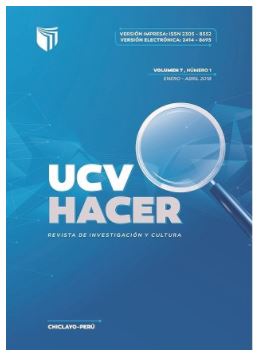Isolation of fungal strains from a tailings pond for lead and cadmium bioremediation
DOI:
https://doi.org/10.18050/ucv-hacer.v9i4.2629Keywords:
Aspergillus niger, Biomass, Heavy metals, Removal, Rhizopus spAbstract
Environmental contamination by heavy metals represents a serious problem for humans and the ecosystem due to its degree of toxicity, which is why it is necessary to have treatment alternatives for its disposal. The bioremediation process of the lead (II) and cadmium (II) metals was carried out; through the use of native fungi isolated from the oxidation pool of the metallurgical laboratory of the National University of San Agustín, Arequipa - Peru; in Sabouraud dextrose and potato dextrose broth culture media, the fungal strains were cultivated to carry out the lead (II) and cadmium (II) removal tests, a batch system was used and the removal percentage was determined. Rhizopus sp and Aspergillus niger were isolated and identified; in the removal tests it was determined that Rhizopus sp was the strain that most removed the lead (II) in 86.39 %, cadmium (II) in 69.23 % and the mixture in 74.82 %. On the other hand Aspergillus niger removes lead (II) in 74.19 %, cadmium (II) in 44.72 % and the mixture in 66.90 % and for the biomass consortium Aspergillus niger-Rhizopus sp removes lead (II) in 84.17 %, cadmium (II) in 43.42 %, and the mixture at 53.43 %. Rhizopus sp and Aspergillus niger fungal biomass efficiently removes lead (II) and cadmium (II) metals, representing a potential alternative for bioremediation processes.
Downloads
Published
How to Cite
Issue
Section
License

This work is licensed under a Creative Commons Attribution-NonCommercial-ShareAlike 4.0 International License.










